Deciding to get inked is a powerful personal choice – your body becomes your canvas, and the tattoo artist you select becomes a collaborator in that creativity.
If you’re here because you’ve already settled on an idea for your next piece, you are halfway there. The next critical step: choosing the right person to bring it to life.
This article will unpack the key factors you need to consider: their style, professionalism, hygiene standards, communication skills, and your gut feeling. Let’s walk through this together with wit, insight, and a cool dose of eloquence.
Understanding your own vision upfront
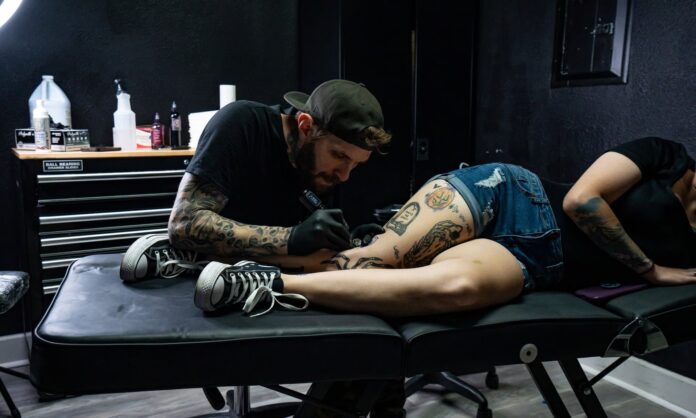
Before you even start searching, ask yourself:
What’s the vibe of this tattoo?
Bold neo-traditional, delicate fine line, Japanese style, black-work, minimalistic?
Knowing what you want sets the stage for matching you with the right artist. If you’re sure about your preference, it becomes easier to weed out the artists whose portfolios don’t align.
For instance I once visited Aura Tattoo Studios Lewisville, TX where the portfolio instantly spoke of beautiful realism and fine-line work, so I knew right away that would align with my minimalist floral idea.
Pick a studio whose portfolio mirrors your vision. Also: take note of placement, size, colour vs black-and-grey, clarifying these will sharpen your search and raise your confidence when you speak with artists.
What to check in the artist’s portfolio
- Style consistency: Do the pieces look similarly stylistic or is there wild variation?
- Clean lines and healed photographs: Are the shots of healed tattoos (not just fresh work)?
- Relevant experience: Has the artist done something similar in size or placement?
- Colour saturation or black-work specifics: If you want solid black, is that a strong suit for them?
Getting clear on your vision equates to smoother communication, better trust and ultimately a tattoo you’re grateful for.
Evaluating the studio environment AND hygiene standards
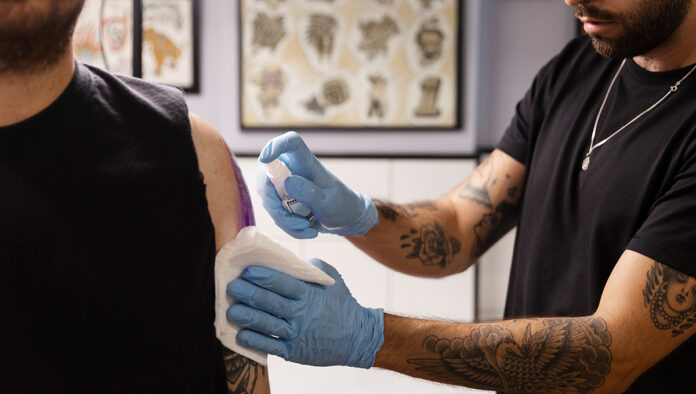
Visiting a studio (in person or virtually) gives vital clues. The studio’s ambiance, cleanliness, and respect for health protocols speak volumes. When I visited one, I noted sterile trays, gloves changed between tasks, and a clear disposal path for needles. These are not luxuries – they’re baseline ethics.
Let’s summarise key hygiene checkpoints:
| Hygiene checkpoint | Why it matters |
| Single-use, individually wrapped needles | Prevents cross-contamination and ensures safety. |
| Clean work area between clients | Demonstrates respect for each client’s health and general professionalism. |
| Clear documentation of after-care instructions | Shows the artist is invested in your tattoo looking good long-term, not just in the chair. |
According to industry guidelines, studios should comply with local health department regulations and sterilise non-disposable equipment between clients.
Ensuring the “shop part” is professional removes one major worry from getting tattooed. Plus, when the environment feels relaxed yet serious – it sets a good tone that your piece will be handled with care.
How to assess the artist’s style and portfolio
Style isn’t just a vague concept – it’s the fingerprint of an artist. Two artists might look like they can do “script” tattoos, but one might favour bold gothic lettering and the other delicate cursive. You want one that nails your vision. To that end, here are a few practical steps:
- Browse their Instagram or website portfolio; look for healed photos (fresh tattoos often look temporarily red or swollen).
- Ask directly: “Have you done something similar (style/placement) before?” A seasoned artist will welcome the question.
- Look at client real-life photos (not just staged studio shots) to see how the ink ages in everyday light.
- Watch for red flags: blurry lines, ink blown-out under the skin, inconsistent colour or saturation.
When you start chatting with the artist, ask what they love doing most. If their enthusiasm aligns with your idea, that’s a good sign. Artists are like any creative professional – they produce best when they’re passionate about the work. So you want one’s passion matching your piece.
Communication matters: the briefing, quotes and bookings
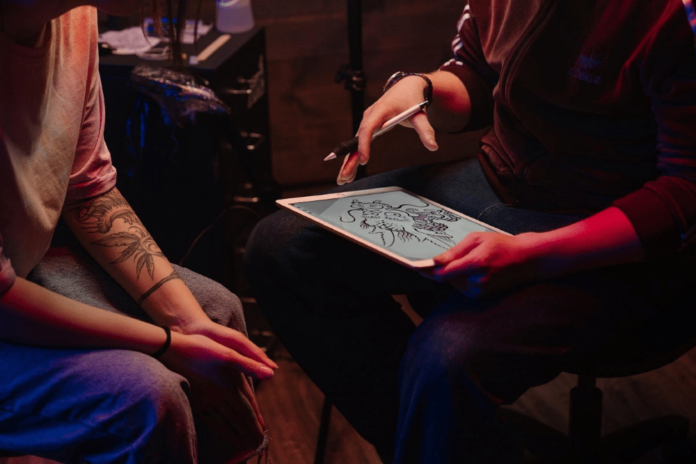
Receiving a quote, discussing your idea, scheduling an appointment – these are part of the experience, and great communication here means fewer surprises later. In this section we’ll narrate and then highlight some bullet-good practices.
In a recent conversation I had with an artist, they asked detailed questions: size, estimated time, colour preferences, skin tone, budget range – and then explained pricing clearly, including the deposit required to lock the slot. That transparency built trust.
Better communication now means better assurance later – and fewer “I wish I’d known” moments.
Budgeting and pricing – what’s reasonable?
Let’s look at how pricing works in the tattoo world – and what reasonable means. Prices vary wildly based on location, size, style, artist reputation, and colour vs black-and-grey. The key is not necessarily picking the cheapest but understanding value. A longer session from a top-tier artist may cost more but saves you from touch-ups or uneven work.
Here are the typical factors:
- Base hourly rate or flat rate for smaller pieces.
- Custom design fee or consultation fee.
- Colour complexity vs black work.
- Placement (some areas take more time and are more painful).
- Artist demand: Popular artists or those with high reputation often cost more and have waiting lists.
“Cheap” isn’t always bad – but if someone offers a huge design for a suspiciously low price, that could be a warning. You might get less time, less attention, or shortcuts. Think long-term: you’ll wear this design for life, on your own skin!
A well-executed piece is worth the investment.
Aftercare, healing and follow-through
Once the needle slows and the session ends, your role continues. The best artist will walk you through after-care, and you’ll want to follow it closely to preserve your piece. Good after-care safeguards your investment and ensures your tattoo heals clean and crisp.
Here are standard after-care steps:
- Leave the bandage on for the recommended time (usually 2–4 hours).
- Wash gently with lukewarm water and fragrance-free soap.
- Pat dry with a clean paper towel; don’t rub.
- Apply a thin layer of recommended ointment or lotion.
- Avoid sun, swimming, hot tubs, intense workouts that cause excessive sweat for first 2-3 weeks.
- Wear loose clothing over the area, avoid friction.
- Do not pick or scratch the tattoo – even if it itches.
If the studio offered a touch-up policy (usually within a few months), make sure you understand that. A good artist wants your piece looking great healed – not just when it’s fresh.
Final Thoughts
Choosing the right tattoo artist is more than showing up with a photo. It’s about aligning vision, style, professionalism, hygiene, communication and that mutual sense of trust.
I’ve walked you through how to evaluate your own idea, check portfolios, ask the right questions, assess budgets, and trust your instinct.
The right artist becomes your ally. So go forth with confidence, ask smart questions, trust the process – and get ready to wear something you’ll love for a lifetime.

